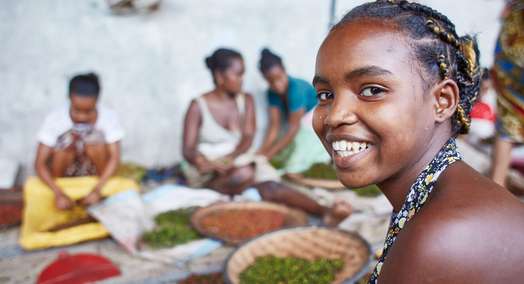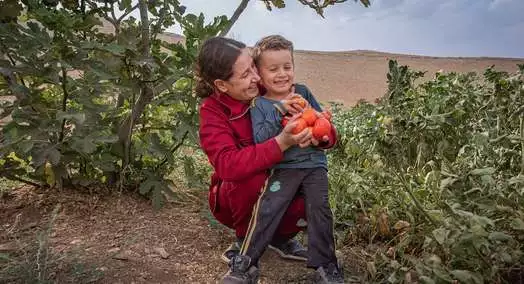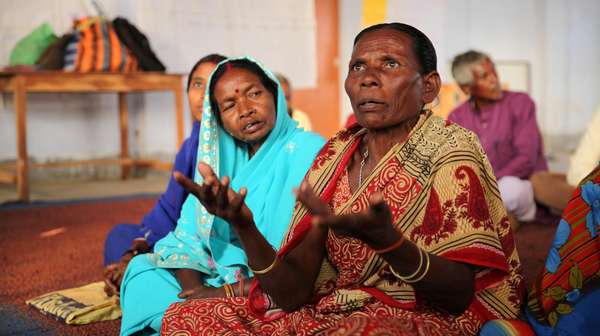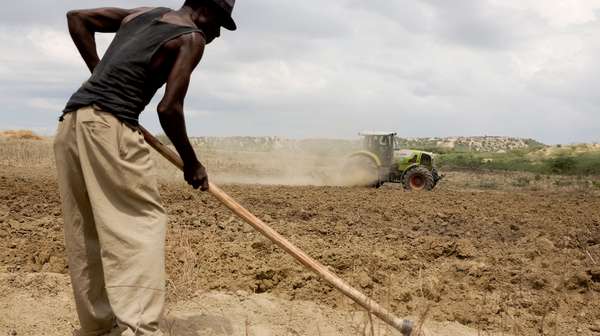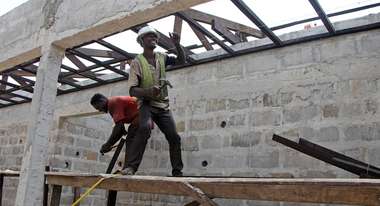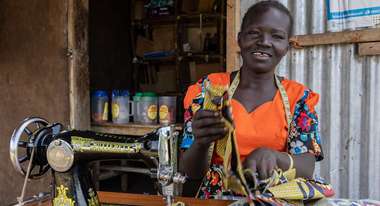How unequal power relations lead to unequal nutritional conditions.
Digitalisation in Agriculture
Agricultural ministers from around 70 countries will be discussing potential digital solutions for agriculture at the Global Forum for Food and Agriculture in mid-January in Berlin. However, is digitalisation in agriculture really an innovative opportunity, or is it a new danger for small-scale farmers throughout the world?
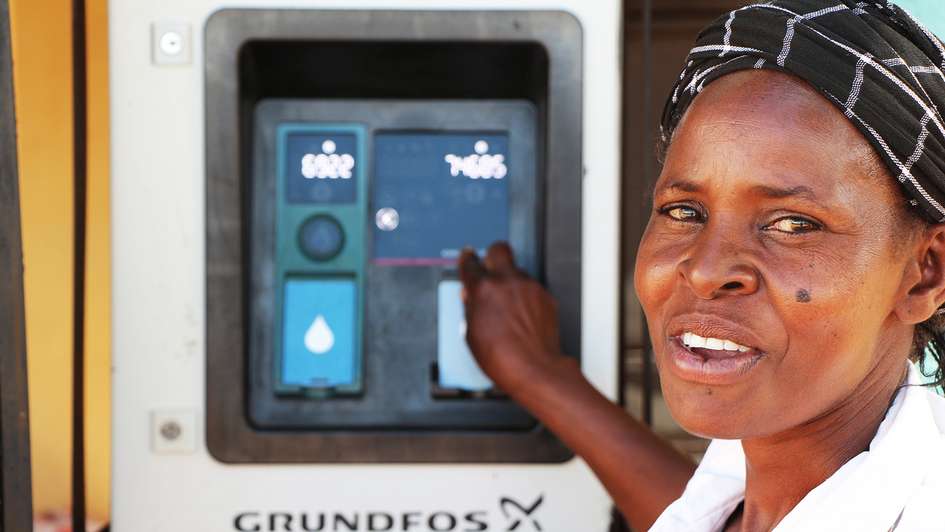
Digitalisation certainly appears to be very promising as a tool in the fight against hunger and poverty. More and more technological solutions for agriculture are being brought to market, accompanied by many promises, including improved productivity, a corresponding increase in income, and more efficient labour processes. However, can these expectations be met, and are they justified? Can the poorest farmers - who often suffer hunger the most - benefit, and if so, how? Is digitalisation in agriculture an innovative opportunity, or is it a new danger for small-scale farmers throughout the world?
Six thoughts on digitalisation and the fight against hunger:
1.The fight against hunger and poverty requires balanced power relations that cannot be manufactured through digital technologies.
Access to adequate nutritious foods is a human right. Nonetheless, 820 million people and rising continue to suffer hunger throughout the world - and not because too little food is being produced. Even Africa, where the availability of food is more limited than in any other part of the world, theoretically has enough food to sufficiently provide for everyone.
In the vast majority of cases, hunger can be traced back to a lack of access, which itself is due to a social, economic, and political power imbalance. Power is exercised within the food system in various ways, for example through the concentration of market and capital shares, which allows agribusiness enterprises to influence the price, availability, and quality of food and of means of production. At the same time, hunger is closely correlated with marginalisation, poverty, and gender inequality.
This means that the key question for fighting hunger is how to create balanced power relations within the food system rather than how to increase productivity and technologisation. The more unequally a given country’s access to land, water, capital, health services, and education is distributed, the slower its progress will be in fighting undernutrition. Digital and technological solutions do not provide adequate answers to these structural issues.
The digital gap between and within developing countries must be bridged.Developing countries - in particular the least developed countries (LDCs) - and vulnerable groups such as the rural population and women benefit significantly less from the development of new information technologies than people in industrialised countries do. The World Bank identifies a triple divide (digital, rural, gender).
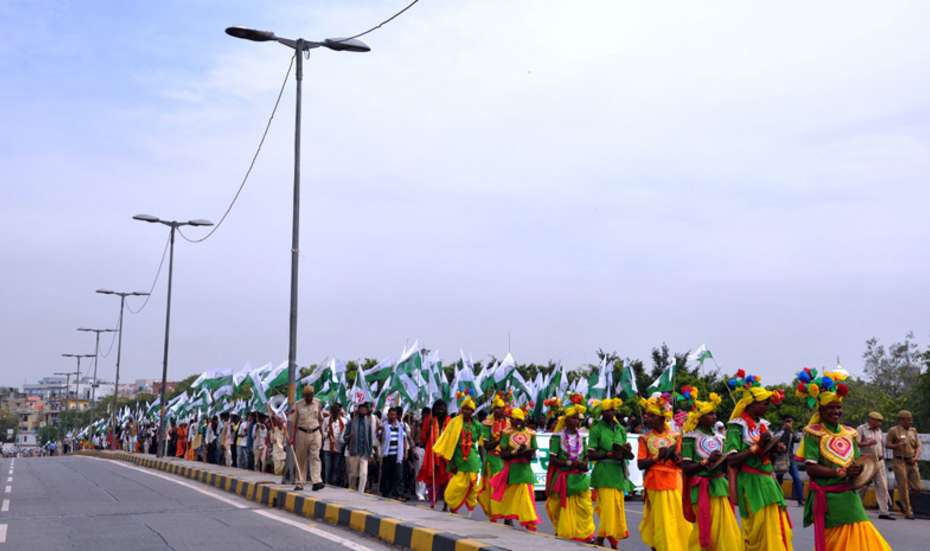
2. Digitalisation in agriculture cannot be allowed to exacerbate inequality.
The digital divide refers to the regional and demographic differences that facilitate or obstruct access to ICT (information and communication technology). More than half (53 percent) of people throughout the world are not online and are therefore unable to benefit from the digital economy. Poor access overall has been well-documented in African countries in particular, many of which - especially LDCs - have much slower internet connections and an underdeveloped digital infrastructure. Although young people the world over use the internet more often than all other age groups, 9 out of 10 young people in Africa do not.
The rural divide comprises the various factors limiting the internet access of people in rural regions compared to urban centres, including poor infrastructure, a lack of electricity, and no mobile phone signal in remote areas. Additional obstacles are posed by broader barriers such as illiteracy and low income in rural regions.
Globally, 12 percent less women than men use the internet. The existence of the gender divide is borne out by well-documented differences between men and women in terms of ICT access: In Africa, the gender gap increased by 5 percentage points between 2013 and 2017, from 20 percent to 25 percent. In LDCs, 31 percent less women than men use the internet, for a total of only 1 out of every 7 women.
For as many people as possible to benefit from digitalisation, this triple divide must be acknowledged, addressed, and overcome with targeted measures before inequality is exacerbated due to the rapid progress of digitalisation.
3. The development impact of digitalisation must be determined more precisely.
The impact of digitalisation has not yet been adequately assessed: Digital solutions are quick to develop, but little evidence has been gathered so far regarding their effects, whether positive or negative. As a result, more accompanying research about the effects and risks of digitalisation in agriculture and in the fight against hunger is now required in order to investigate the impact of ICT solutions in agriculture and to manage and minimise risks in a targeted manner.
AgriShare is a mobile phone enabled platform that links farmers with hiring services for production, processing and transporting.
4. Digital solutions must be adapted to the needs of small-scale farmers and be accessible to them.
Digital solutions in agriculture offer small-scale farmers a range of opportunities. They can more easily exchange know-how, remain in closer communication using digital communication technologies, and access information about markets and prices, weather conditions, and cultivation methods. Shared economy platforms allow the farmers who cannot afford to purchase agricultural machinery for themselves to trade, lend, or borrow the equipment in question amongst each other. However, a variety of conditions must be met for small-scale farmers to receive access to these applications and for access obstacles to be eliminated:
- Internet applications should be adapted to the local context and languages and should offer solutions promoting rural literacy and education (e.g. by employing videos and images)
- They should take into consideration sociocultural factors such as the incorporation of indigenous expertise and traditional agricultural products
- They should be tailored to the users’ level of digital literacy
- They must be developed, tested, and improved in conjunction with the farmers/target groups
- Due to high data costs, incomplete network coverage, and a poor power supply, the information should also be available offline and/or be sent by text message to mobile phones that are not internet-enabled
- Gender-specific user behaviour should be taken into consideration
- Digital solutions must prioritise the welfare of the small-scale farmers rather than the profit maximisation of companies
In order to promote development, digital applications should be geared to the needs of small-scale farmers rather than to the interests of companies, which are primarily concerned with selling their products and creating new dependencies. This is the only way for small-scale farmers to profit economically.
The small-scale farmers can, for example, increase their income by improving their negotiating position with respect to middlemen thanks to better information about market prices. At the same time, they can identify additional sales channels for their products. This can improve their market access because their options expand, they can learn about niche markets, the supply chain can become more transparent, and information about transport routes can become more accessible.
They can also gain access to digital financial services. Furthermore, the digitalisation of information channels can allow agricultural advisory bodies, which are underfunded in many countries, to reach more rural residents.
However, this approach is not free of risk. One potential danger arises from applications that primarily serve corporate interests, for example of an agricultural producer focussed on increasing sales. Another risk is presented by the collection, storage, and transmission of user data. Furthermore, verifying and validating information pose an additional
5. Legal and policy frameworks must keep up with digital developments.
The global political regulation framework, especially in developing countries, does not yet sufficiently account for the new circumstances brought about by digitalisation. Legal loopholes remain open, for example with regard to data access or security. There is also the risk of neglecting to create an appropriate regulatory framework, since such an adaptation and the related capacity development are challenging in light of these countries’ already-limited resources. This would leave the system vulnerable to exploitation by corporate interests, which is why these regulations are so important.
The need for regulation is especially great in LDCs. Current policies should be adapted rather than supplemented by the creation of additional frameworks. These adaptations should give special consideration to the needs of small-scale farmers and should create a supportive environment, e.g. for local small and medium enterprises. National action plans can help to expand the digital infrastructure and to close the triple divide. This includes “do no harm” regulations, the acknowledgement and observation of the Digital Principles, the safeguarding of data sovereignty, and investment in the development and expansion of digital capacities, especially within the most vulnerable demographic groups. All demographic groups should be equally involved in the development of digital strategies.
